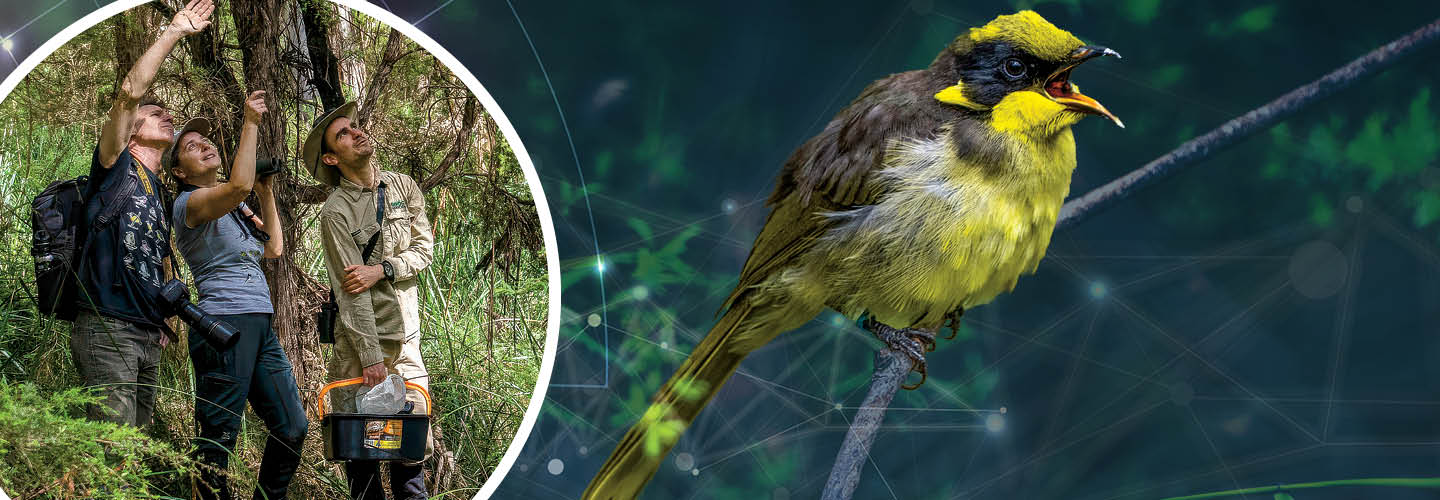The helmeted honeyeater is a bird that demands to be noticed. With a patch of electric-yellow feathers on its forehead, it squawks loudly as it zips through the dense swamp forests of the state of Victoria, Australia. But over the past few centuries, humans and wildfires damaged or destroyed these forests, and by 1989, just 50 helmeted honeyeaters remained.
Habitat loss as well as invasive species, infectious diseases, and climate change have put the helmeted honeyeater and many other native animals in peril and given Australia one of the worst rates of species loss in the world.
In some cases, scientists argue, the threat is so great that there’s only one way to save the animals: by changing them. Using a variety of techniques, including crossbreeding and gene editing (see “How Gene Editing Works,” below), scientists are altering the genomes of vulnerable creatures, hoping to give them the traits they need to survive.
The helmeted honeyeater is a bird that lives in the dense swamp forests of the state of Victoria, Australia. The patch of electric-yellow feathers on its forehead and loud squawks make it noticeable. But over the past few centuries, humans and wildfires damaged or destroyed the forests where it lives. By 1989, just 50 helmeted honeyeaters remained.
Habitat loss, invasive species, infectious diseases, and climate change have put the helmeted honeyeater and many other native animals in danger. Australia now has one of the worst rates of species loss in the world.
Scientists argue that, in some cases, the only way to save the animals is by changing them. They hope that by altering the genomes of vulnerable creatures, they will give them the traits they need to survive. Scientist are using a variety of techniques including crossbreeding and gene editing (see “How Gene Editing Works,” below).

